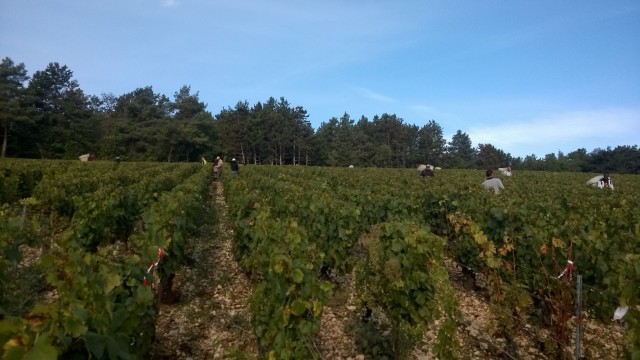Extraordinary September weather may have rescued the 2014 Burgundy wine harvest from disaster, ripening ‘intensely aromatic’ whites and ‘concentrated’ reds.
Devastating hailstorms earlier this year left vignerons gloomy about the prospects for 2014. Up to 40% of the vines in Meursault, Pommard, Volnay and Beaune were destroyed by ‘golf-ball sized hailstones’ in June, with worse damage in other communes.
But September’s fine weather – there has been only 5mm of rain so far – has brought on both reds and whites and harvesting should be finished by the middle of next week.
‘The Chardonnay is fantastic, ripe with lots of acidity,’ Domaine Faiveley technical director Jerome Flous told Decanter.com. ‘The Pinot Noir is concentrated with thick skins; they have a good balance of acidity and alcohol but the fruit is tight. It will be a classic Burgundy vintage, good for ageing. The only problem is quantity. There is a low skin to juice ratio.’
At Maison Louis Latour, which owns 50ha in the Cote d’Or, estate manager Boris Champy said, ‘the whites are very, very good. They are intensely aromatic, but it is difficult to extract the juice.’
Burgundy’s wine trade body, the BIVB, said 2014 could produce a more ‘normal’ amount of wine - around 1.5m hectolitres - following three consecutive small harvests in 2011, 2012 and 2013. But, there is strong variation between areas.
‘Some vineyards are having a full harvest, some have had millerandage and small grapes,’ said the BIVB’s Cecile Mathiaud. ‘And of course, there are the vineyards in North Cote de Beaune and North Maconnais that have lost a lot with the hail,’ she added.
‘The equivalent of one entire crop is actually missing in Burgundy’, said Faiveley’s export director, Vincent Avenel.
‘Prices tend to increase in this kind of situation,’ he added, especially as demand is high. > >
>
For the 2013 vintage, which is just being bottled and will be released en primeur this November, price increases will be ‘probably +3% to +15%, depending on the appellation and quantities available,’ he said.
Read more at > Burgundy 2014: September heatwave set to save vintage - Decanter

Burgundy's 2014 vintage fights back - The Drinks Business
Despite June’s hail storm and a new vineyard pest, Burgundy’s latest vintage should stabilise the market.
Est. reading time: 2 minutes